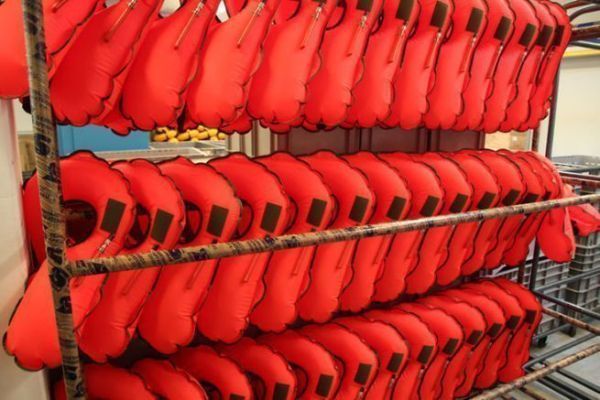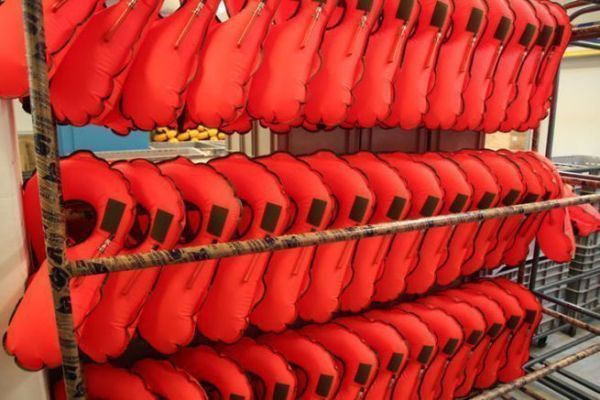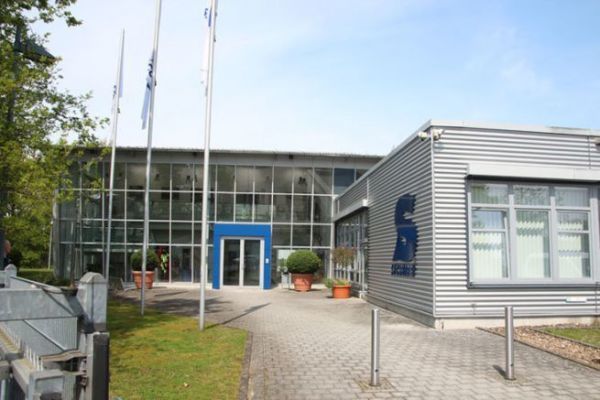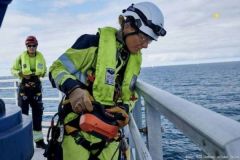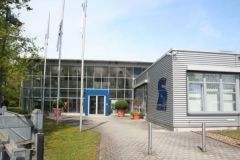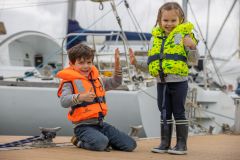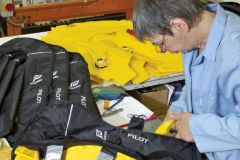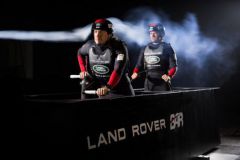Secumar is the only manufacturer of safety equipment to produce all its vests in Europe. A visit to the factory and the care taken at every stage of production is a good showcase for the quality of its products. We were able to wander among the 120 men and women who make up the factory's workforce, take all the photos we wanted and ask all the questions we wanted. Here, everything is transparent, with the end-user's safety as our sole objective.
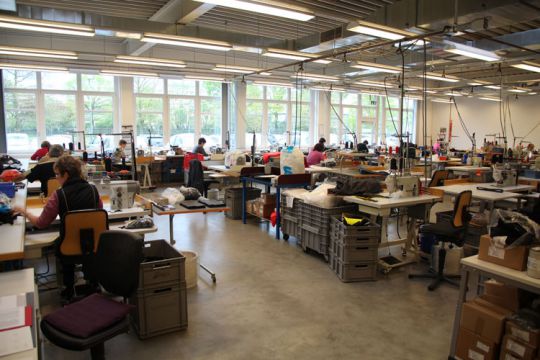
It was clear from the visit that every stage of production is controlled, checked and tested. Nothing is left to chance.
The tour begins in the product quality test room, before production begins.
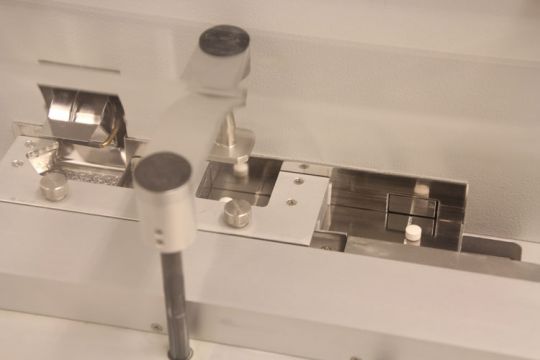
Each pellet measured and weighed
You might think that the cellulose pellet is a simple, inexpensive item. But it's on it that the vest's trigger depends. Each pellet produced is measured and weighed by a machine that does this all day long. The machine is specially designed by engineers in the Secumar design office.
Outsourced CO2 cartridges are also all tested and certified. They then receive a label validating their use.

Firing pins put to the test
An operator also tests each firing pin. With the firing pin installed in a special machine, she checks that it pierces a metal pellet (similar to the head of a cartridge) and, above all, that the length of the needle that pierces the cartridge complies with the recommendation. Each firing pin is registered with its serial number, so that the vest can be traced at a later date.
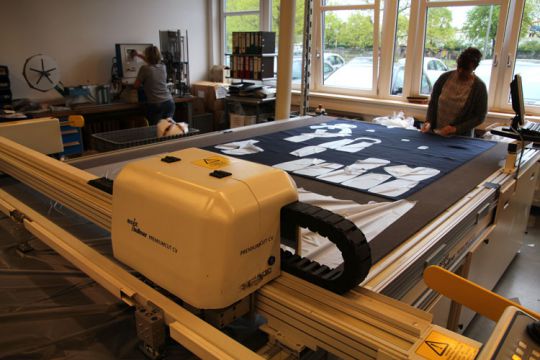
Precision cutting and assembly
All textile parts for the vests are cut on a digital machine. They are then assembled by seamstresses in a large workshop. Here, not a word is spoken, just the sound of sewing machines at work.
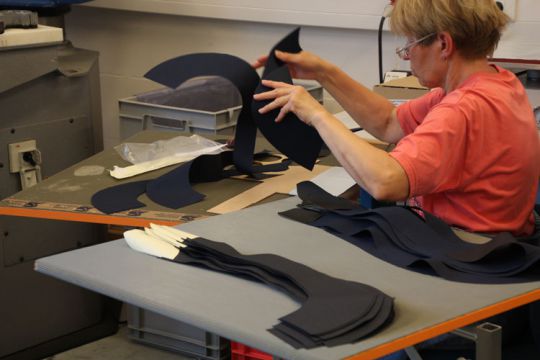
In the next room, the lungs are thermobonded in a huge machine, piece by piece. Every 100 pieces produced, a lung taken at random from the production line is subjected to a strength test. In other words, the lung is inflated until it explodes (a huge bang, like a gunshot!). The pressure value is checked before the explosion.
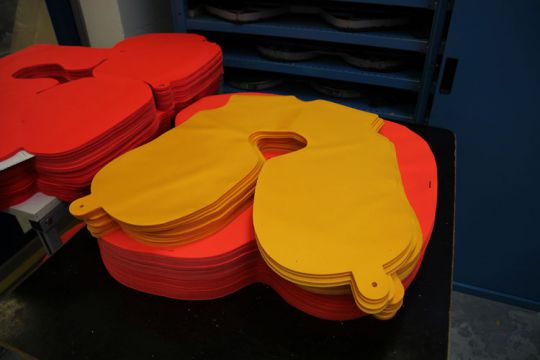
Then all the lungs, without exception, are inflated to standard pressure, the mouth inflation valve is checked, and the inflated lungs are stored overnight to validate the pressure hold.
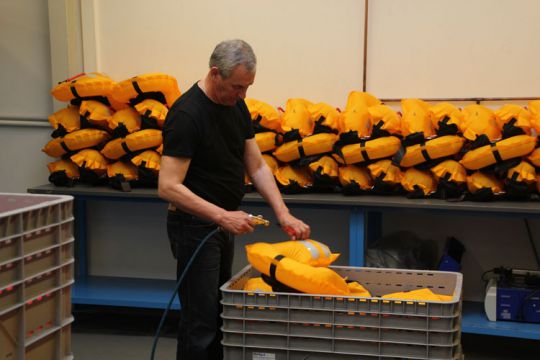
It's not until the following day that the lung and cover are assembled and folded to form the vest, ready for sale. They also receive the sticker indicating the date of the next revision (the validity date runs from the date of manufacture, not the date of sale...).

Well-organized production
In 2004, SECUMAR moved to new premises. These are truly functional, with a sort of production chain that begins with raw material deliveries, the storage warehouse and then assembly, culminating in deliveries of ordered products. Very clean, well insulated and convenient, the premises encourage the workers to work while respecting them and their working conditions.

A laboratory that resembles a torture chamber
Alongside the production line, a laboratory with test equipment is available to the design office. This is where all product development research tests are carried out.
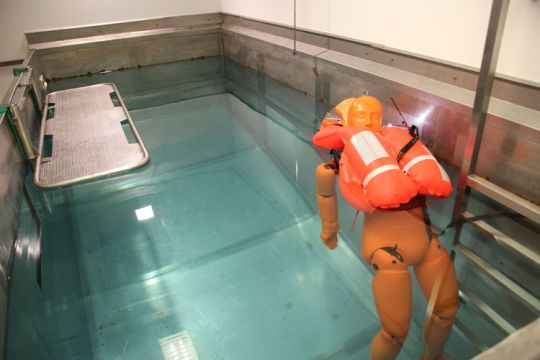
In the laboratory is Scotty, a faithful adult-sized mannequin who doesn't hesitate to take the plunge to test the latest inventions from the design office. Sometimes he's dressed up. We saw him, for example, in full SNSM gear, to validate tests as close as possible to real-life conditions. The lab also :
- A machine like a washing machine drum to measure the strength of the outer cover.
- A traction bench to validate the strength of the harness.
- Another machine that reproduces repetitive pulls on the harness.
- A body that moves to validate the effects of wear and tear when wearing the vest.
- There's also a climatic oven in which it can be very hot or very cold to see how the vest behaves at these extremes of temperature.
Watch the exclusive video shot in the Secumar lab below.

